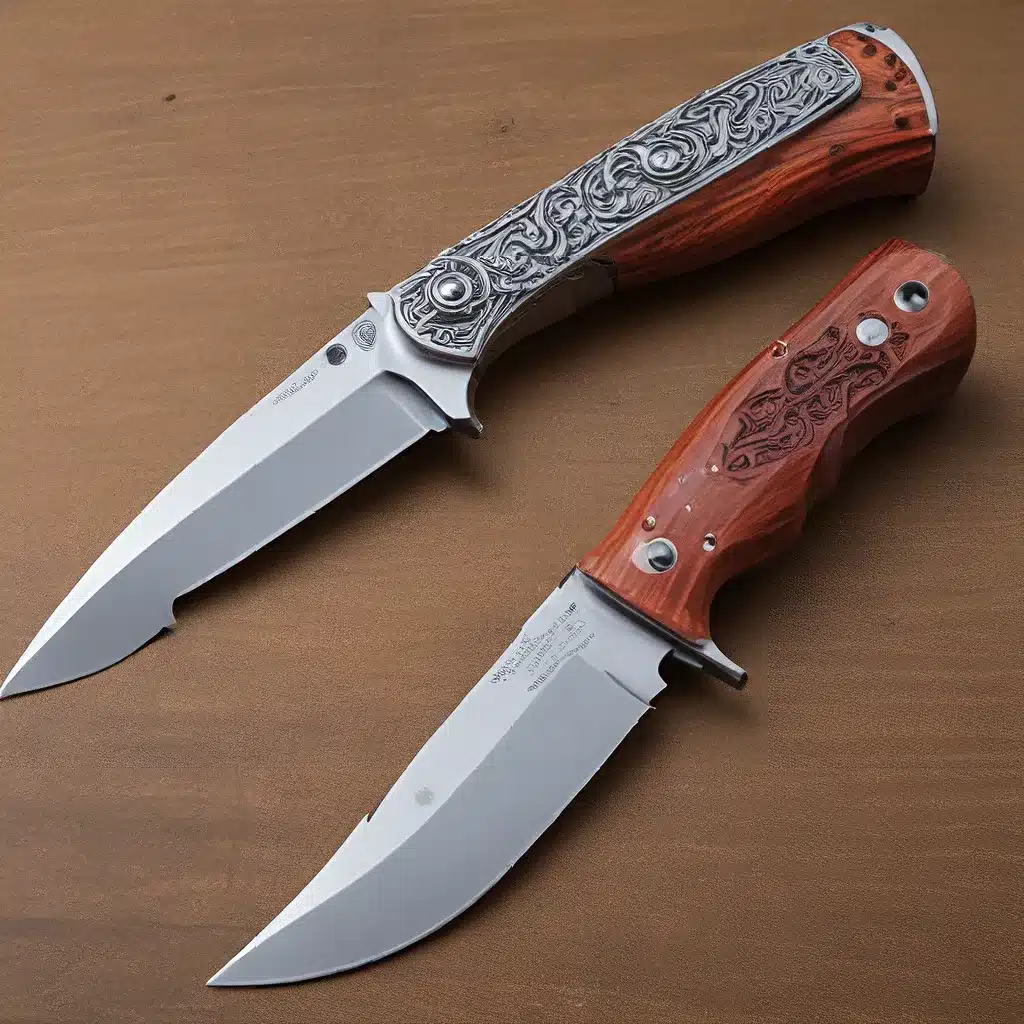
As a proud knife enthusiast, I’ve always been fascinated by the intricate world of blade customization. The idea of taking an ordinary tool and transforming it into a work of art – with a dash of functionality and maybe even a hint of danger – has long captured my imagination. But as I’ve delved deeper into this captivating realm, I’ve come to realize that the legal landscape surrounding knives is a veritable minefield, fraught with a tangled web of regulations, exceptions, and ever-shifting interpretations.
Navigating the Murky Waters of Knife Laws
When it comes to the legality of knives, it seems there’s no such thing as a one-size-fits-all solution. Each state, and even individual cities, have their own unique set of rules and restrictions. And as if that wasn’t complicated enough, the legal definitions of terms like “dirk,” “dagger,” and “switchblade” can be maddeningly ambiguous, leaving plenty of room for interpretation (and, let’s be honest, confusion).
Take California, for example. According to the American Knife and Tool Institute (AKTI), the state’s Penal Code defines a “dirk” or “dagger” as “a knife or other instrument with or without a handguard that is capable of ready use as a stabbing weapon that may inflict great bodily injury or death.” Sounds straightforward enough, right? Not so fast. The AKTI also notes that “a nonlocking folding knife, a folding knife that is not prohibited by Section 21510, or a pocketknife is capable of ready use as a stabbing weapon that may inflict great bodily injury or death only if the blade of the knife is exposed and locked into position.”
In other words, the legality of a knife in California may come down to something as seemingly innocuous as whether the blade is locked in place. And as the case of People v. Castillolopez illustrates, even a Swiss Army-style tool with an open but non-locking blade can land you in hot water.
Customization Conundrums
Now, let’s throw knife customization into the mix. As a knife enthusiast, I can’t help but admire the skill and artistry that goes into creating a one-of-a-kind blade. But when it comes to the legal implications, the waters get even murkier.
Take, for instance, the case of ballistic knives. These specialized combat tools, which can launch their blades at high speeds, have long been the subject of controversy and intrigue. In the United States, the Federal Switchblade Act of 1986 specifically prohibits the manufacture, sale, and possession of these knives. And many states have gone even further, enacting their own restrictions or outright bans.
But what about more common customizations, like adding a pocket clip or modifying the blade length? Well, it depends. In California, for example, the AKTI notes that a knife carried in a sheath worn openly on the waist is not considered concealed, even if the blade is longer than the legal limit for a folding knife. But when it comes to pocket carry, the waters get murkier. The AKTI suggests that this method “may not be compliant” with the state’s concealed carry laws.
The Risks of Misinterpretation
The legal complexities surrounding knives, and the potential consequences of getting it wrong, are nothing to be taken lightly. As the case of Jonathan Lee Hester demonstrates, a simple matter of possession can result in a hefty prison sentence – in his case, six years for the mere presence of two box cutters.
And it’s not just the blades themselves that can land you in trouble. In some jurisdictions, even the appearance of a knife can be enough to trigger legal action. As the AKTI notes, California’s Penal Code prohibits the possession of any “instrument or weapon of the kind commonly known as a blackjack, slungshot, billy, sandclub, sandbag, metal knuckles, or bludgeon.” So, if your custom-made knife bears a resemblance to one of these “dangerous” items, you could find yourself on the wrong side of the law.
Navigating the Knife Maze: Tips for the Cautious Collector
So, what’s a knife enthusiast to do? Well, the first and most important step is to educate yourself on the relevant laws in your area. Spend time carefully researching the statutes, court rulings, and legal definitions that apply to the knives you own or plan to acquire.
And when it comes to customization, it’s crucial to proceed with caution. Avoid modifications that could potentially push your knife into a legal gray area, such as changing the blade length or altering the opening mechanism. Instead, focus on customizations that are clearly within the bounds of the law, like engraving, handle materials, and other aesthetic touches.
It’s also a good idea to stay up-to-date on the latest legal developments in the knife world. Organizations like the AKTI are constantly monitoring the ever-changing landscape of knife laws, and they can be an invaluable resource for staying informed.
Ultimately, the key to navigating the legal minefield of knife customization is to err on the side of caution. While the thrill of creating a one-of-a-kind blade is undoubtedly tempting, it’s simply not worth the risk of ending up on the wrong side of the law. By staying informed, making thoughtful choices, and always keeping safety and legality at the forefront, you can indulge your passion for knife customization while avoiding the pitfalls that can turn a harmless hobby into a legal nightmare.
And who knows – with a bit of creativity and a keen eye for the law, you might just discover that the most impressive customizations are the ones that stay firmly within the bounds of the legal system. After all, where’s the fun in a knife that can land you in jail?
So, fellow knife enthusiasts, let’s raise a (metaphorical) toast to the art of customization – and the even greater art of staying on the right side of the law. Cheers, and happy blading!


